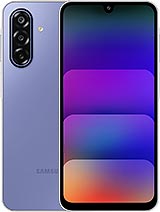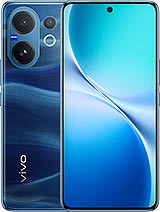Samsung Galaxy F17 alternatives
Tap above to see alternatives.
vivo V60 alternatives
Tap above to see alternatives.
Samsung Galaxy F17

Samsung Galaxy F17
-
Exynos 1330
5 nm
-
5000 mAh
25W
-
6.7"
1080 x 2340 pixels
-
50 MP
1080p@30fps
- Specs
2x2.4 GHz Cortex-A78
6x2.0 GHz Cortex-A55
1x2.8 GHz Cortex-720
4x2.4 GHz Cortex-720
3x1.8 GHz Cortex-520
6GB 128GB
8GB 256GB (UFS 2.2)
12GB 256GB (UFS 2.2)
16GB 512GB (UFS 2.2)
f/1.8, (wide), 1/2.76", 0.64µm, AF, OIS, Up to 10x Digital Zoom
5 MP
f/2.2, (ultrawide), 1/5.0", 1.12µm
2 MP
f/2.4, (macro), 1/5.0", 1.75µm
f/1.88, 23mm (wide), 1/1.56", 1.0µm, Sony IMX766, PDAF, OIS
50 MP
f/2.65, 73mm (periscope telephoto), 1/1.95", 0.8µm, Sony IMX882, PDAF, OIS, 3x optical zoom
8 MP
f/2.0, 15mm, 120˚ (ultrawide)
gyro-EIS
1080p@30fps, gyro-EIS, OIS
f/2.0, (wide), 1/3.1", 1.12µm
f/2.2, 21mm (wide), 1/2.76", 0.64µm, Samsung JN1, AF
1080p@30fps
13 5G bands
n1, n3, n5, n6, n7, n8, n26, n28, n40, n41, n66, n77, n78
11 5G bands
n1, n3, n5, n8, n28, n38, n40, n41, n66, n77, n78
In this performance comparison, the vivo V60 with its Qualcomm Snapdragon 7 Gen 4 (4nm) performs better than the Samsung Galaxy F17 with the Exynos 1330 (5nm), thanks to superior chipset efficiency.
Samsung Galaxy F17 offers 6 years of OS updates, whereas vivo V60 provides 4 years. Both phones receive the same 6 years of security updates.
Both Samsung Galaxy F17 and vivo V60 feature AMOLED displays, offering vibrant colors and deeper blacks. In terms of smoothness, vivo V60 offers a higher 120 Hz refresh rate, ensuring fluid scrolling and animations. vivo V60 also boasts a brighter screen with 5000 nits of peak brightness, enhancing outdoor visibility. Both phones have the same screen resolution.
vivo V60 features a larger 6500 mAh battery, potentially delivering better battery life. vivo V60 also supports faster wired charging at 90W, compared to 25W on Samsung Galaxy F17.
vivo V60 offers better protection against water and dust with an IP69 rating.
- vivo V60 – Check price here
¹ Scores can vary even with the same chipset due to RAM, thermals, and software optimization.











